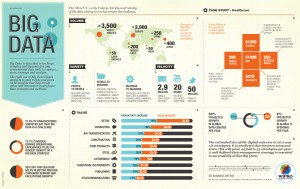
As IT development and globalization makes the world becomes smaller, it also quickens the pace in business world. As the idiom goes, “time and tide wait for no mean”, nowadays, managers have to make high-pressure decisions in a shorter period of time.
According to a survey done by Havard Business Review, 74% of the global executives SAS claimed that they “feel under heavier pressure to make a smart decision in less time than ever before”.
To make a faster and more accurate decision, savvy managers turn to analyzing data about customers, operations, risk and more.
Rather than collecting data from traditional databases, businesses are also adding on unstructured text from call-centre logs and social media – into their decision-making to attain competitive insight.
As far as we concerned, the volume, variety and velocity of data being stored by organizations has grown tremendously. Procter & Gamble’s chief information officer, Filippo Passerini said, “analytics accelerates our decisions because everyone is now looking at the same reality.”
There are some IT companies that are doing very well in managing their database, such as Google and Facebook. Both of the companies utilize the data of its users in targeting and maximizing the efficiency of advertising. Essentially, Google and Facebook generate their revenue mainly by analyzing users’ online behaviors by “putting the right advertisement to the right person at the right time“.
Data management not only helps a business in marketing but also other fields such as R&D, accounting and so forth. According to the authors of “Big Data: The Management Revolution“, not only high-tech companies but every company from other sectors, are prompt to instil a culture of data-driven decisions, supported by the people, processes and technology – especially analytics – to ensure success.
Also read “Viewpoint: Big data and big analytics means better business“

 Initially, as a brand from nowhere, the Taiwanese mobile-phone firm has experienced a swift rise from anonymity to omnipresence after the releases of some good smartphones such as One X, HTC Touch, and the Sensation series. However, mentioned by Wilfred Loh, the revenue and profit of HTC has been plummeting after decreasing sales. The rationale of the sales drop is simple: HTC does not understand its customers.
Initially, as a brand from nowhere, the Taiwanese mobile-phone firm has experienced a swift rise from anonymity to omnipresence after the releases of some good smartphones such as One X, HTC Touch, and the Sensation series. However, mentioned by Wilfred Loh, the revenue and profit of HTC has been plummeting after decreasing sales. The rationale of the sales drop is simple: HTC does not understand its customers.





